
For thousands of years , People all over the world have yeast for brewing beer and baking bread. Yeast is a type of fungus that lives on the skins of many fruits. Just a spoonful of yeast contains millions of separate , single – celled (very simple) organisms. Each one works like a tiny chemical factorytaking in sugar , and giving out alcohol and carbon dioxide gas. While they feed , the yeast grow larger and then reproduce by splitting in half.
Yeast turns graps juice into alcoholic wine, and makes beer from mixtures of grain and water . When it is added to uncooked dough, yeast produces gas bubbles that make the bread light and soft. Brewing gas bubbles that make tht bread light and soft. Brewing and baking are important mordern industries that depend on yeast working quickly.
This project consists of four separtae experiments. By comparing the results, you can discover the best condition for yeast to grow. It needs a moist environment to be active. Lack of moisture makes the cells dry out and hibernate (sleep). Add water to dried, powdered yeast, and- even after many years – it will become active again.
Measuring cup, water, kettle, adhesive colored labels, four small glass jars, teaspoon, dried yeast granules, sugar, scissors, plastic, wrap, three rubber bands, two heatproof bowls, ice cubes.
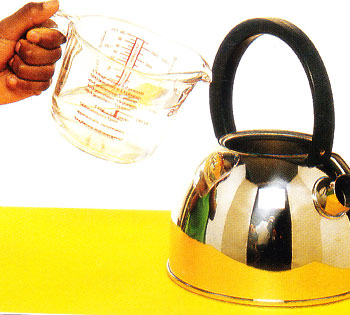
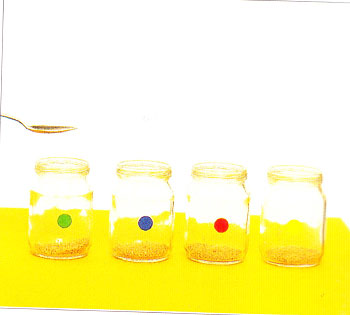
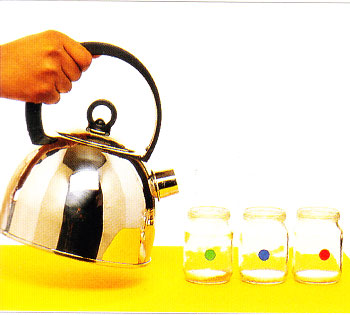
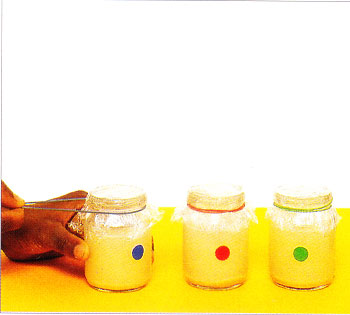
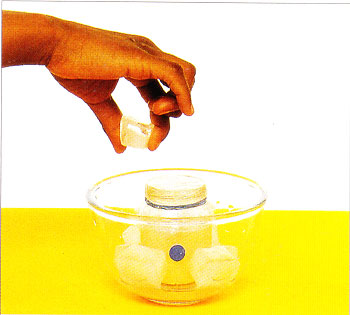
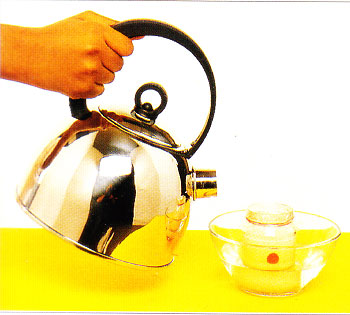
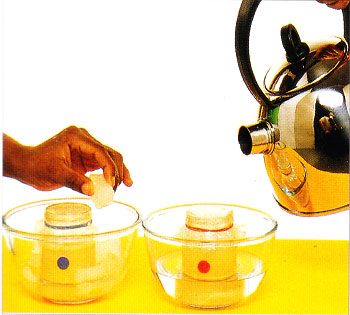
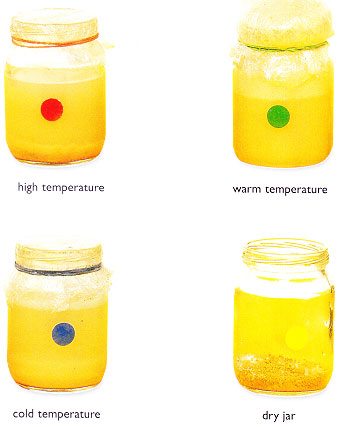
The yeast that was kept warm has fed on the water and sugar , and its gas is pusing up the plastic wrap. In the dry jar there are no signs of activity, because the yeast is hibernating.

Try out the other sections